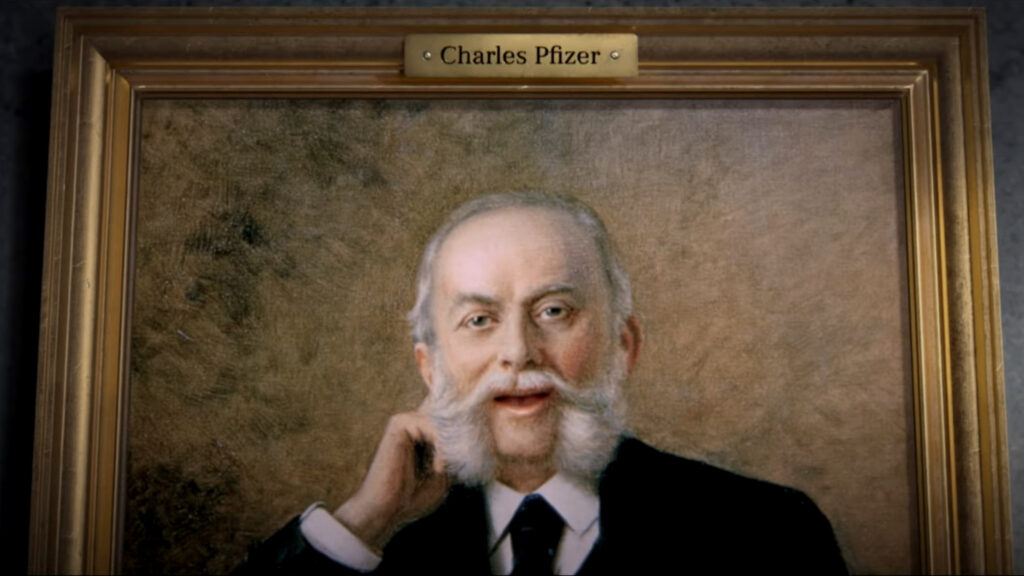Super Bowl ads are a show within the show, an opportunity for brands and advertising creatives to put their work in front of more than 100 million viewers. And while the occasion is most closely associated with ads for beer, cars, and soft drinks, pharma giant Pfizer dished out millions of dollars for its own message: “Here’s to science.”
The company aired a commercial in which animated portraits, illustrations, photographs, and statues of scientific luminaries including Newton, Hippocrates, Einstein, Rosalind Franklin, Marie Maynard Daly, and Katalin Karikó sang an anthem to medicine’s progress to the tune of Queen’s “Don’t Stop Me Now.” The commercial also features cameos from penicillin and a singing tardigrade, all leading up to the final celebration of a child cancer patient leaving the hospital to staff applause. The ad ends by sharing the URL of the pharma company’s new cancer initiative, LetsOutdoCancer.com, and the brand’s new tagline, Outdo Yesterday.
advertisement
The commercial was made by advertising agency Publicis Conseil and Le Truc/Publicis NY. Pfizer declined to comment on how much it spent on the ad, though CBS has reported that the price tag for a 30-second Super Bowl ad was $6.5 million to $7 million — and Pfizer’s ad was 60 seconds (shortened from the original 90-second version). That’s a small sum for a roughly $156 billion company but is still a significant investment compared to Pfizer’s other cancer-related initiatives. Just days ago, Pfizer announced a $15 million donation to the American Cancer Society over three years but spent at least half that on the commercial alone.
The ad comes as the pharmaceutical company celebrates its 175th anniversary and looks to promote a dynamic, optimistic message about Pfizer’s future to the general public, investors, and the company’s own employees. But Pfizer’s financial outlook for 2024 is looking bleak in large part because sales of its Covid-19 vaccine have plummeted. The company is hoping to turn those fortunes around by betting big on cancer treatment to become a main revenue stream — including through the $43 billion acquisition of Seagen. Pfizer is currently investing 40% of its research and development budget in oncology, according to data shared via email by spokesperson Faith Salamon.
“I think that there’s some need to re-engage the public. But I also think it’s more than just the consumers: This is perhaps also a signal to employees of the company who might be wondering, ‘Should we continue to be working for this company?’ to say, ‘Some great things have come out of this company and you’ve got to do great things,’” said Pradeep Chintagunta, a professor at the University of Chicago Booth School of Business who specializes in pharmaceutical marketing. “It could be a signal to the financial markets. I think this is perhaps a broader attempt to reach different kinds of stakeholders.”
advertisement
Pfizer’s Salamon told STAT that the company’s goal was to “celebrate science in a fun, engaging and uplifting way” that captured the persistence and relentlessness of scientific discovery.
“The Super Bowl is a wonderful platform, it’s probably the only platform in the world where you can talk to every audience that’s out there, both [business-to-business] and [business-to-consumer]” said Drew Panayiotou, the global chief marketing officer at Pfizer, in a behind the scenes video about the commercial.
Polling shows that the pharmaceutical industry remains the least-trusted sector of America’s economy. But, by focusing on cancer treatment, Chintagunta says Pfizer’s ad is likely to resonate with many in the general public. “For a lot of consumers, Pfizer is probably known for Covid [vaccines]. The only other thing I think they associated Pfizer with was Viagra,” he said.
While these products may not elicit strong unifying reactions, cancer “is something that I think all Americans can relate to,” Chintagunta said. “That was a clever thing, which is to play up on something that everybody can resonate with.”
Notably, while the ad shows an image of mRNA and Nobel Prize winner Karikò, it does not mention the Covid-19 vaccine specifically. This, too, is likely intentional. “The Super Bowl has a very broad viewership. Many of these folks probably don’t believe in vaccines. By essentially avoiding that mention, they basically kept away from being associated with it, which could have had some potential negative fallout,” said Chintagunta.
In adding its founders, the businessmen cousins Charles Pfizer and Charles Erhart, along with Einstein, Fahrenheit or Somerville, the drugmaker seeks to write itself into the history of science. But whether Pfizer’s public relations play was successful or a fumble is going to be hard to measure in the short term. Since the ad doesn’t promote one particular product, its impact can’t be seen in sales numbers, though perhaps it could show in changes in the company’s stock (which was essentially flat today). Another indicator could be personnel retention, in particular when it comes to top talent. Considering the one call to action in the ad was to visit Pfizer’s cancer site, the brief spike in search interest for Pfizer during the Super Bowl could also be a success indicator.
Absent other indications, the only clear winner connected to the company from last night’s game was Chiefs tight end (and Pfizer brand ambassador) Travis Kelce, whose team took home the trophy.

